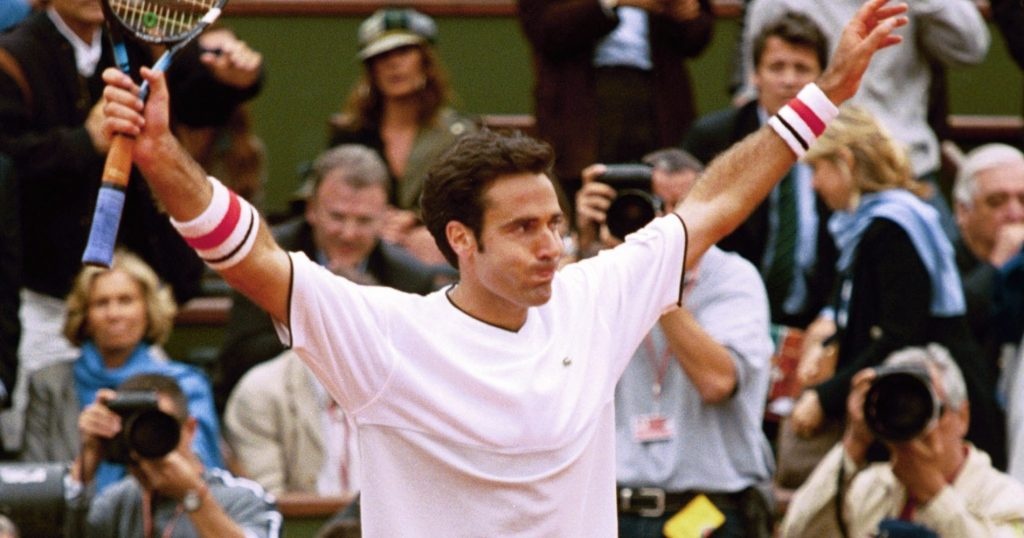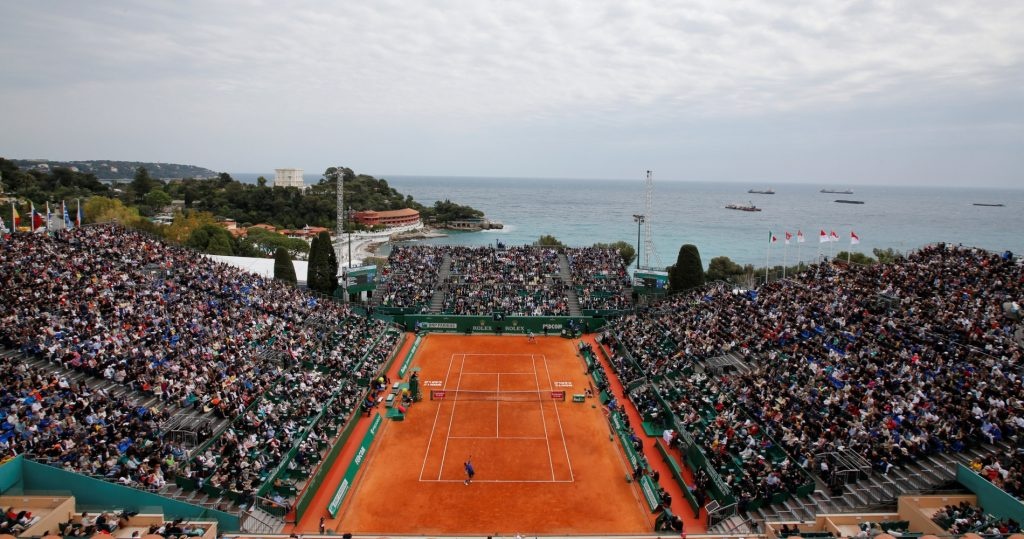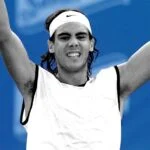April 27 1997: The day Marcelo Rios’ prize money didn’t cover his casino losses
Every day, Tennis Majors looks back to the biggest moments in tennis history. On April 27, 1997, Marcelo Rios beat Alex Corretja in Monte-Carlo on the way to becoming world No 1
 Marcelo Rios, On this day (April 27)
Marcelo Rios, On this day (April 27)
What happened exactly on that day
On this day, April 27, in 1997, 21-year old rising star Marcelo Rios from Chile, the No 7 seed, claimed the title in Monte-Carlo, winning the final 6-4, 6-3, 6-3 against Spaniard Alex Corretja. This was the first step of an 11-month journey that would help him to become world No 1 in March 1998 (knocking Pete Sampras off top spot). He is the only man in tennis history to have reached No 1 without winning a Grand Slam tournament.
When given the microphone at the trophy ceremony, Rios surprised everyone by giving a very short and unconventional speech. The lefty was more gifted with a racquet than with words. These final words to the audience confirmed his inability to successfully function as an ambassador for his sport and sealed his bad boy reputation forever.
The players: Marcelo Rios and Alex Corretja
- Marcelo Rios: uber-talented, temperamental Chilean left-hander
Aged 21, “El Chino” already had quite a reputation. On one hand, he was known to be a very promising and entertaining player: at the age of 17, he was already giving world No 1 Pete Sampras a hard time at Roland-Garros (losing 7-6, 7-6, 6-4). In 1996, at the age of 20, he reached the semi-finals at Indian Wells and in Monte-Carlo and Toronto, becoming the first Chilean tennis player ever to enter the top 10. The Santiago-born player started 1997 by reaching the Australian Open quarter-finals.
On the other hand, he was also well known for his volatile temper, especially towards fans and journalists: he was very reluctant to sign any autographs (he didn’t “see the point”), and it was almost impossible to get anything out of him in interviews, except mumbles and abuse.
- Alex Corretja: Elegant Spaniard with supreme one-handed backhand
On the opposite side of the net, Alex Corretja, aged 23, was known as a very nice, polite tennis player, a guy whom journalists would call “the Gentleman” in the years to come. Corretja was also not a rookie on the Tour. Entering the draw in Monte-Carlo as No 12 seed, he had been part of one the biggest tennis dramas in a famous 1996 US Open quarter-final against world No 1 Sampras. In this match, Corretja lost 7-6, 5-7, 5-7, 6-4, 7-6, after missing a match point in a match that saw a valiant Sampras suffer and even throw up on court in the final-set tiebreak.
Corretja eventually grew into one of the most consistent clay-court players of his generation, reaching two finals at the French Open (1998, 2001).

The place: The Monte-Carlo Country Club
This episode in Rios’ infamous career took place at the prestigious Monte-Carlo Country Club. Located at the top of the Rocher de Monaco, with a unique perspective on the Mediterranean Sea, the Country Club has hosted one of the oldest international tennis tournaments since 1928. It is usually considered as the start of the clay-court season. In 1997, the tournament was a part of the Super 9 category, the equivalent of today’s Masters 1000 events. When the tournament started that year, the Monte-Carlo crowd knew Marcelo Rios and his attractive game from the year before, when he had made his way into the semi-finals. Corretja had participated only once before and had lost in the first round.

The facts: Rios takes title, then reveals casino losses
Marcelo Rios arrived at the 1997 Monte-Carlo open displaying a provocative haircut matching his controversial character: a shaven slicked back ponytail giving him an edgy look. He also showed an impressive level of tennis the entire week. He took the ball extremely early, finding unexpected angles and fired his trademark jumping backhands with gusto. Rios didn’t lose a single set before reaching the final, upsetting on his way great clay-court players such as Albert Costa (6-4, 7-6) and Carlos Moya (6-4, 7-6). Despite his attitude towards the public, his very creative game generated a lot of enthusiasm amongst tennis fans.
Alex Corretja, champion in Estoril the week before, was rising as a new clay-court terror, putting extreme spin both on his forehand and backhand side, playing a very “Spanish” type of game. Corretja had not faced any seeded player on his way to the final, as former Roland-Garros champions Sergi Bruguera and Thomas Muster had been both surprisingly defeated by French wildcard Fabrice Santoro.
Corretja and Rios had played against each other four times already, each of them having won twice. It was then hard to pick a favorite in this showdown between the rising bad boy and Gentleman Alex.

This particular Sunday was a very windy day. Rios parked himself on the baseline from the very first points, forcing the Spaniard to run around the court. Corretja seemed a bit short of energy, being in a final for two consecutive weeks. “El Chino” zeroed in on his backhand side using his typical lefty forehand and used any short ball to step in and fire down-the-line forehand winners or short cross-court backhands. Corretja didn’t have the strength that day to play deep enough to contain his opponent. He was totally outplayed by Rios, who won 6-4, 6-3, 6-3, claiming his first premium title.
The Chilean had one last surprise up his sleeve for the Monte-Carlo audience…
After showing his trophy to the public, he was given the microphone for the traditional champion speech. A speech done in his very own way. Looking at his prize-money, he just mumbled: “This does not even cover the money that I lost at the casino this week! Thank you, see you next year.”
To the astonishment of the officials around, he didn’t say more. Even in this moment, his biggest achievement to date, that’s all he had to say. Ironically, he wouldn’t even see them the following year, as an injury would force him to pull out of the Monte-Carlo Masters.
What next: Rios hits No 1, Corretja peaks at No 2
The same two players faced each other a couple of weeks later in the final of another Super 9 event in Rome. The outcome was different though: Corretja won 7-5, 7-5, 6-3. Surprisingly, neither of them performed very well at the French Open that year, both reaching only the round of 16, Rios being defeated by Hicham Arazi (6-2, 6-1, 5-7, 7-6) while Corretja lost against qualifier Filip Dewulf (5-7, 6-1, 6-4, 7-5).
Rios claimed eight titles in the next 18 months. After a huge start in 1998, when he reached the Australian Open final before winning in both Indian Wells and Miami, he became world No 1 on March 30th.
Unfortunately for Rios, he would never confirm his status by winning a Grand Slam. He was also the first player to win all the clay-court Super 9 tournaments (Monte-Carlo in 1997, Rome in 1998, Hamburg in 1999). His later career was disturbed and shortened by repeated injuries pushing him to retire in 2004, aged only 29.
His outrageous speech in Monte-Carlo was just the start of a series of controversies, mostly due to his behaviour outside the tennis court. He performed some sort of remake of the Monte-Carlo speech in 1998, when the president of Chile invited him to his palace after Rios became world No 1 and asked him if he wanted to say anything to the Chilean people. Rios simply declined with a one-word answer: “No”
Alex Corretja climbed up to No 12 in the world in 1997, winning another clay-court tournament in Stuttgart. He then became a serious contender for the Roland-Garros crown, a dream he never achieved, being beaten in the final by Moya in 1998 and Kuerten in 2001 making it to the semi-final in 2002. Although he never performed very well in the other Grand Slams (only once did he pass through the round of 16) and was mostly famous for being a clay-court specialist, his biggest achievement was winning the ATP Finals (then known as The Masters) on an indoor court in Hanover, Germany, in 1998, which helped him reach his best ranking as world No 2 in February, 1999.
_______________________________
This poignant tale serves as a powerful reminder for those whose tournament winnings proved inadequate in offsetting their losses at a real money online casino, offering a valuable lesson to be learned.













